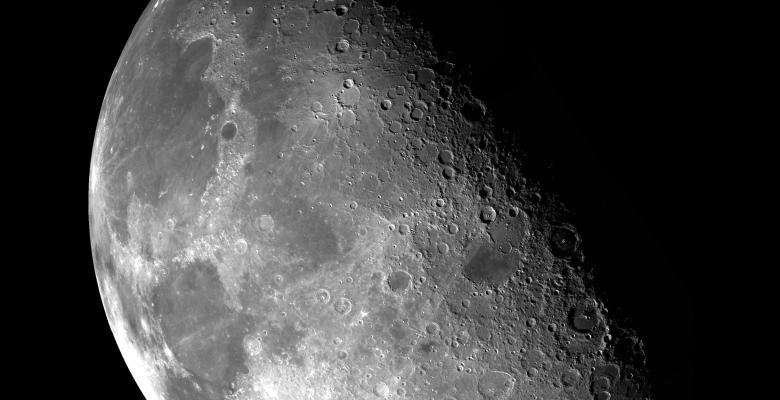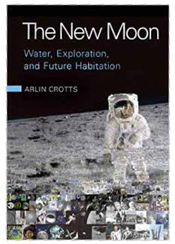Envisioning the Moon as a Launch Pad to Explore the Outer Solar System


For years, Arlin Crotts has been an iconoclast among his peers in the world of lunar science. His beliefs that the moon must have water and could possibly supply all the elements necessary to sustain life were considered unconventional to say the least.
“Some people thought I was off my rocker,” said Crotts, an astronomy professor who has been at Columbia since 1991. “One scientist from another university once wrote publicly that my ideas were crazy. And it took extra effort getting my lunar work published—the word ‘lunatic’ came up, of course.”
Over the years, however, scientific research has begun to validate many of Crotts’ hypotheses. Water vapor, in the form of ice trapped in soil on the surface of the moon, was discovered in 2009. About then, according to Crotts, people stopped calling him crazy.
Crotts’ new book, titled The New Moon: Water, Exploration, and Future Habitation, explores his innovative ideas and many more in meticulous detail, providing hard scientific findings that topple decades-old ideas about the moon’s development and structure. Readers may well wonder why the U.S. abandoned its lunar exploration program in 2010, just as so many discoveries were emerging.
Today, we know that billions of tons of water exist on the moon in the form of ice, and Crotts is sure that more will be found. It’s not likely the kind of H2O earthlings drink but rather one rich in heavy water—or deuterium oxide—a form of water in which the hydrogen atom’s nucleus is double the mass of ordinary hydrogen, rendering it undrinkable by humans without processing.
Crotts believes the moon’s water could be broken down into liquid hydrogen and liquid oxygen, a potent mix that makes an ultra-efficient form of rocket fuel, the same kind that powered the NASA Saturn V rockets that boosted the Apollo spaceships out of Earth’s atmosphere towards the moon.
“You’d have to look hard to find another propellant that’s as efficient or better,” said Crotts. The moon also has carbon monoxide that Crotts said could be converted with water into methane, another efficient and powerful rocket fuel.
With all that potential rocket fuel, Crotts naturally believes that the moon could one day be transformed into an interplanetary gas station for the satellites and rockets that today get discarded because they eventually run out of fuel and drift into the wrong orbit.
“The moon has all the materials needed to not only keep those vehicles operational, but to sustain human life and house an entire working society,” he said. “By utilizing what is already there, you could build many things. If you want to sustain a new human population off Earth, this is the easiest place to do it.”
He says we could also use the moon as a more efficient launch pad for rockets to explore the outer solar system. It takes 25 to 30 times less energy to launch from the moon than from Earth, he says, and he has proposed a method to do just that.
“By launching from the moon, you can get places faster because you don’t have to build something the size of the Statue of Liberty to launch spacecraft a small fraction of that size into space,” Crotts explained. “You’re already there.”
Crotts’ book chronicles everything from the moon’s subterranean caverns to the dirty tricks the Soviet Union used to try to slow the U.S. race to the moon, such as sending anonymous letters to Kennedy Space Center reporting plots to blow up Apollo 8 and Apollo 11. He filed multiple Freedom of Information Act requests and read through hundreds of FBI files to obtain the previously unpublished information.
Crotts even voices enthusiasm for searching for traces of alien life on the moon. “If there are intelligent alien explorers out there, they could do a pretty good job of monitoring the Earth from the moon because it’s right next door,” Crotts said. “If any of that has happened in the last 4 billion years, and if they’ve left anything behind, it’s probably still there.”
The moon, Crotts noted, has a reputation for being a severe, harsh place. Astronaut Buzz Aldrin, the second person descending to its surface, described it as “magnificent desolation.” But Crotts insists it’s only desolate at first glance.
“If you look past the moon’s surface—the desolation—you see how easily it could serve as a permanent habitat for humans. It’s magnificent in the vast opportunities it offers—nearby opportunities that are being overlooked.”